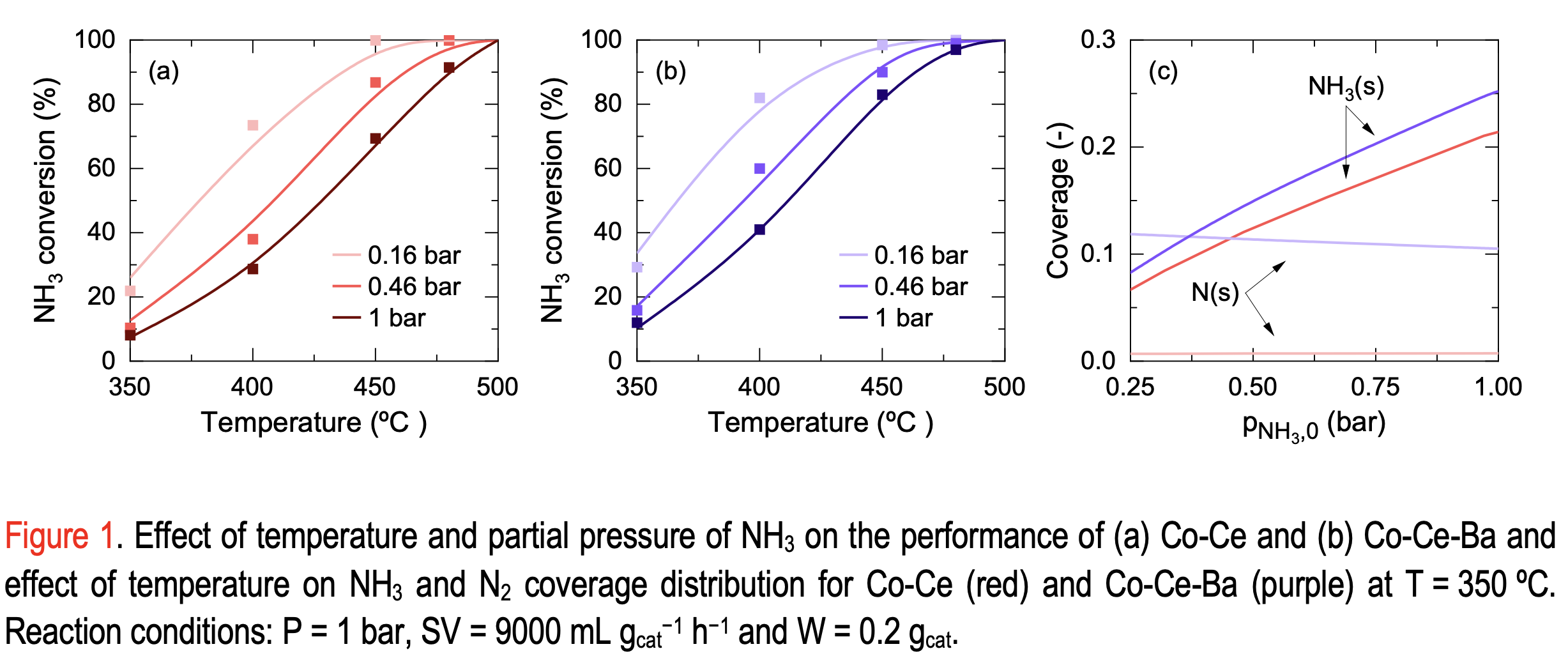Ammonia is a good candidate as hydrogen carrier due to its high volumetric-energetic density and low liquefaction pressures, among others, where hydrogen is obtained via catalytic ammonia decomposition. Transition metals such as Fe, Co, and Ni have been tested to lower the costs of benchmark Ru-based catalysts. We experimentally demonstrated that our Co-Ce-Ba catalyst matches the performance of a Ru-based catalysts, with Ba acting as a textural promoter and preventing the agglomeration of Co nanoparticles. When promoting the catalyst with other metals, the negative hydrogen order typically decreases when using global power-law rate expressions. However, global rate expressions give no specific information about the elementary reaction steps.
The present work explains the kinetic contribution of Ba using microkinetic rate expressions that offer additional information about the steps comprising the overall ammonia decomposition process. Combining experiments performed over a wide range of operating conditions for two Co-Ce catalysts, (with and without Ba) and the enthalpy-entropy constraints for the overall reaction, microkinetic rate parameters were optimized for both catalysts. By comparing the reaction path analyses in addition to the predicted catalytic species coverages for each catalyst, the kinetic role of Ba as a promoter is uncovered. Figure 1a-b shows the experimental and predicted NH3 conversions over various temperatures and NH3 partial pressures, exhibiting goodness of fit. In Figure 1 c, where the NH3 and N2 coverages are shown for the full range of NH3 partial pressures, it can be seen that the surface coverages intercept for the Co-Ce-Ba catalyst at low NH3 partial pressures while for Co-Ce they do not. Such a variation changes the elementary reaction rates, implying a change in the RDS or possibly the presence of two limiting steps for the given range. Thus, explaining the difference in activity between the promoted and non-promoted catalyst.


